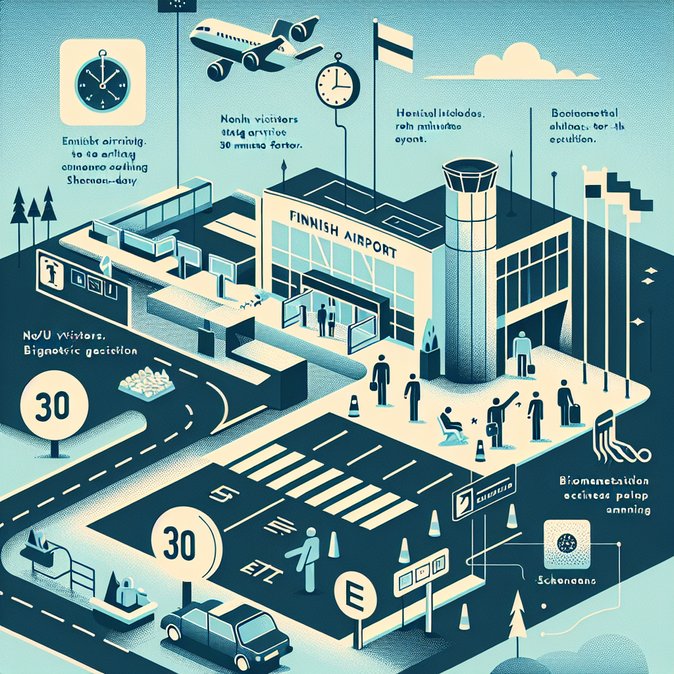
Coinciding with EU-wide coverage on 24 October 2025 about the first fortnight of the new Entry/Exit System (EES), Finland’s Border Guard and aviation operator Finavia released updated passenger FAQs to address teething problems observed at Helsinki and Lapland airports. The guidance builds on the EU’s own information drive and aims to smooth holiday-season traffic as non-EU visitors adapt to fingerprint and facial-image capture at automated kiosks.
Key Finnish take-aways include advising travellers to arrive 30 minutes earlier than usual for Schengen-area departures, pre-download Finavia’s mobile-app instructions and ensure passports have at least one blank page until stamping fully ceases in April 2026. Border officials emphasise that long-term residence-permit holders and EU citizens are exempt, but British, U.S., Japanese and Singaporean tourists—all major long-haul markets for Finland—must enrol biometrics on first entry.
Finnair and tour operators report average processing times of four minutes per traveller, slightly higher for families with children under 12 who require a photo but no fingerprints. The Border Guard says contingency lanes and manual booths remain open for cruise-ship passengers arriving in Helsinki and Turku, where kiosk deployment is still underway.
For corporate-mobility teams, the EES changes mean international assignees on short-stay Schengen (C-type) visas will have their days in-country calculated automatically, reducing flexibility for last-minute business trips that risk overstays. HR should audit travel-tracking systems to integrate EES data once available via forthcoming API interfaces. Finnish technology firms are already exploring facial-recognition solutions to expedite staff travel between headquarters in Espoo and R&D sites abroad.
The MFA reminds travellers that EES is the precursor to the €20 ETIAS travel-authorisation requirement due in late 2026, and encourages companies to budget for the new fee in 2026 travel forecasts.
Key Finnish take-aways include advising travellers to arrive 30 minutes earlier than usual for Schengen-area departures, pre-download Finavia’s mobile-app instructions and ensure passports have at least one blank page until stamping fully ceases in April 2026. Border officials emphasise that long-term residence-permit holders and EU citizens are exempt, but British, U.S., Japanese and Singaporean tourists—all major long-haul markets for Finland—must enrol biometrics on first entry.
Finnair and tour operators report average processing times of four minutes per traveller, slightly higher for families with children under 12 who require a photo but no fingerprints. The Border Guard says contingency lanes and manual booths remain open for cruise-ship passengers arriving in Helsinki and Turku, where kiosk deployment is still underway.
For corporate-mobility teams, the EES changes mean international assignees on short-stay Schengen (C-type) visas will have their days in-country calculated automatically, reducing flexibility for last-minute business trips that risk overstays. HR should audit travel-tracking systems to integrate EES data once available via forthcoming API interfaces. Finnish technology firms are already exploring facial-recognition solutions to expedite staff travel between headquarters in Espoo and R&D sites abroad.
The MFA reminds travellers that EES is the precursor to the €20 ETIAS travel-authorisation requirement due in late 2026, and encourages companies to budget for the new fee in 2026 travel forecasts.





